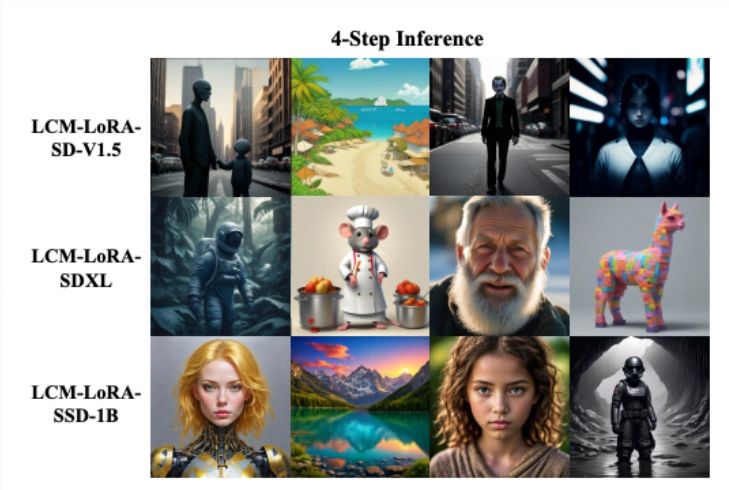2024 Лучшие бесплатные Deepnude AI: AI обнаженные
Ниже представлен список лучших AI-приложений для создания ню, которые стоит проверить!

Latent Consistency Models (LCMs) have emerged as a groundbreaking advancement in the field of computer-generated imagery, revolutionizing how images are synthesized using artificial intelligence. This new technology, developed by a team of forward-thinking researchers, aims to address the limitations of previous models and push the boundaries of speed and efficiency in image creation. Compared to traditional Latent Diffusion Models (LDMs), LCMs (Latent Constrained Models) are equally excellent in generating detailed and creative images, but they require only 1-4 steps instead of hundreds. This innovation is making an important leap forward for text-to-image AI.

LCMs represent a leap forward from the Latent Diffusion Models (LDMs). While LDMs have demonstrated their capability in generating high-resolution images, their process is inherently slow. They typically start with a random image and undergo numerous iterative steps to refine it into a realistic picture. Each of these steps requires significant computational power, resulting in a slow and resource-intensive process.
In contrast, LCMs utilize the principles of Consistency Models, known for rapidly solving complex mathematical problems. By predicting the final image directly and bypassing the multiple iterative steps, LCMs significantly speed up the image creation process. This is achieved by solving problems in a hidden space, known as the latent space, and transforming the solution directly into an image. This innovative approach enables LCMs to generate high-quality images in mere seconds, a feat that was not feasible with earlier models.
One of the most remarkable aspects of LCMs is their training efficiency. For instance, a high-quality LCM with a resolution of 768x768 requires only 32 A100 GPU hours for training. This efficiency makes LCMs not just a tool for large corporations or research institutions but also accessible to individual enthusiasts and smaller teams. Once trained, these models can generate stunning images with minimal computational steps during the inference process, saving both time and resources.
The adaptability of LCMs is further enhanced by Latent Consistency Fine-tuning (LCF). This method allows for the customization of LCMs for specific datasets, enabling users to tailor the model to generate particular types of images. Whether it's creating images of natural landscapes, urban settings, or specific objects like cars or animals, LCF makes LCMs versatile and adaptable to various needs. This customization does not just make the model more accurate but also expands its utility across different domains and applications.
In a comparative study using the LAION-5B-Aesthetics dataset, LCMs outperformed other text-to-image generation models. This is a testament to their superior capability in creating high-quality images rapidly. The industry implications of this are significant, especially in fields like graphic design, digital marketing, film production, and virtual reality, where high-quality visual content is paramount.
Further enhancing the power of LCMs is the development of LCM-LoRA, a Stable-Diffusion Acceleration Module. This module serves as an accelerator, making LCMs not only faster but also more versatile. It can be integrated into various models for different image generation tasks without extensive training, making it a valuable asset for speeding up image generation across multiple applications.
Looking ahead, the potential of LCMs in the realm of AI and computer-generated imagery is vast. We can look forward to further breakthroughs in AI-powered image generation, as models continue to advance in sophistication, intuition, and their ability to handle increasingly complex and nuanced assignments. This could lead to a new era of digital content creation, where AI assists creators in realizing their visions with unprecedented ease and efficiency.
However, these advancements will also bring challenges, particularly in terms of ethical considerations and the authenticity of AI-generated content. As AI takes on a more significant role in content creation, there will be an increased focus on ensuring responsible use and preventing misuse, such as deepfakes.
In conclusion, Latent Consistency Models are a significant milestone in the evolution of computer-generated imagery. By offering a solution that is not only rapid but also produces high-fidelity images, LCMs are setting new standards in the field of generative models. These developments unlock fresh opportunities for swift and top-notch image synthesis, positioning them as vital contributors to the future landscape of AI-driven content creation. For those interested in delving deeper into the capabilities of LCMs, their published paper and website offer a wealth of information and examples of their innovative work.